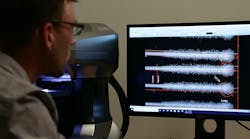Change is hard. Being able to change on a dime or rapidly pivot to market demand is even harder. Why? Because despite claims of operational agility, change is uncomfortable and often means acting despite significant resistance.
Of course, in this era of continued uncertainty, it’s important that businesses both embrace and learn from change, explains Manish Sharma, group CEO, Accenture Operations.
As countries follow different paths in response to a health crisis like COVID-19, regional setbacks and recovery patterns place strain on supply, demand and workforces – often forcing organizations to repurpose capacity across locations. “This means leveraging upturns in demand in recovering areas to create fuel to either support the prospect of recurring stress, or to help regions in stress,” says Sharma. “It also means improving cross-channel inventory management with data and analytics, enabling you to reposition and repurpose inventories across geographies and customer segments.”
With change happening faster than humans can respond, companies will increasingly need to improve and accelerate their decision-making and operations with the power of technology, explains Sharma.
Pivoting through Synergies
Microbrush International, a Young Innovations company based in Chicago, is a well-established dental manufacturer with a solid reputation for providing a variety of different consumable applicators and brushes for restorative and preventative dental applications. However, when COVID-19 reached the U.S., the dental market was, at least initially, considered non-essential. This understandably brought Microbrush to a grinding halt. And, as a result, the company begrudgingly furloughed a lot of employees at its Grafton, Wisconsin, facility.
The decision to explore a meaningful pivot surfaced when a Young Innovations team member noticed striking similarities between the medical test swabs utilized for COVID-19 tests and the dental products the company produces in Grafton, explains Young Innovations CEO Dave Sproat. After the engineering team took a critical look at swab samples, the product development team worked with the U.S. Department of Defense as well as the Cleveland Clinic to ensure it had the right specifications – and that there was going to be a continued demand for the shortage should the company embark on the journey.
The existing supply chain played a crucial role. One such partner was Procter & Gamble division iMFLUX, which was able to provide a mold within a few weeks, ultimately enabling Microbrush to run production swabs at the required density. The company also leveraged a contract packaging company.
“The result was in 90 days, we were shipping a gold-standard nasal pharyngeal swab, without any of the feature sacrifices seen on the 3D printed varieties,” says Frymark. “Being an FDA-registered, ISO 13045 certified facility, Microbrush had plenty of experience with all of the design control and validation activities to make sure that this is all FDA compliant. This was really a matter of leveraging our core technology to help the country address this shortage.”
Sproat tells IndustryWeek, although Microbrush has an established presence within the dental industry, creating test swabs meant entering an entirely new medical category. “We’ve learned our way through a lot of this in a short period of time,” he says. “We also needed to understand the commercial aspects of getting our product in the market -- identifying the distributors of choice, understanding where swabs were going as well as what else needed to be sold in conjunction with them. We're still learning, quite frankly.”
Understandably, the pivot to create swabs involved a tremendous investment of money (both in equipment and human capital), with the ultimate focus being on serving as an ongoing player in this market post pandemic. There's only one other company that Sproat knows of manufacturing this product in the U.S. Microbrush recently produced its 20 millionth swab, with units available on the shelf and the ability to easily add production to hit 5 million units per week.
“What's exciting for us is that it took 90 days from inception to commercialization, including the development of products, setting up the mold, recalling employees, figuring out packaging and sterilization and getting that supply chain ready for the U.S. market,” Sproat says. “Candidly, I am very glad as a leader here, to bring jobs back quickly. And we want to maintain those jobs because that's really good for the economy.”
The J&J Prescription: Digitally Enabled Transformation
Operating within the digital economy is increasingly dynamic and complex – and the challenges are underscored and accelerated most recently by COVID-19. Consumers and patients are seeking personalized and on-demand experiences, prompting innovations such as patient-specific supply chains and personalized medicine, explains Bart Talloen, vice president, innovation & insights, supply chain strategy, innovation and deployment, at Johnson & Johnson.
“The healthcare industry is experiencing consolidations and new entrants that are disrupting business models,” Talloen says. “The expansion of the middle class in emerging markets and the aging population in developed markets is creating new access opportunities. The common theme that intersects these trends and disruptors is digital – and digital is the thread that underpins and accelerates the journey of our supply chain.”
As part of a broader transformation, J&J is undertaking focused technical and digital investments in areas such as data science, robotics and intelligent automation to build an end-to-end digital ecosystem.
“In addition to continuously improving our operations and delivering efficiency gains, these foundational capabilities can be applied in new ways that enable our supply chain to get ahead of emerging patient, consumer and customer needs for the future,” Talloen says.
The strong digital foundation was key to J&J’s response to the COVID-19 pandemic. Over the past four months, virtual and augmented realities (VR/AR), real-time demand sensing, robotics and 3D printing have proven crucial.
VR/AR. These technologies have enabled J&J supply chain teams to leverage virtual, digital environments to visualize plant sites and provide remote assistance. At many locations, the combination of digital worker technology and privileged remote access has been one of many factors that have made it possible for operations to continue without interruption. These digital technologies have enabled employees to be productive while working virtually from their homes. VR/AR allows technicians and engineers at a remote location to virtually see the exact same thing that a worker or mechanic sees while standing in front of a machine, enabling virtual maintenance and engineering assistance.
Real-time demand sensing. Anticipating demand changes rapidly and adjusting production schedules to ramp up volumes quickly for key products is crucial. When demand for Tylenol doubled in some markets as COVID-19 spread, J&J ramped up production of this critical medication by running manufacturing sites 24/7, and producing and shipping at all-time high rates, while maintaining high levels of safety, quality and compliance. “Additionally, in accordance with appropriate guidelines, including those from the CDC and the FDA, our supply chain converted some manufacturing lines at facilities around the world to produce hand sanitizer, which is helping to protect employees who work in research and development, manufacturing and distribution,” Talloen says. Hand sanitizer is also being donated to health and community service workers.
Robotics, automation and 3D printing. These manufacturing technologies have helped ensure manufacturing plants and distribution centers continue to run without interruption, while also meeting new and emerging needs for patients, consumers and customers. “For example, Ethicon, a J&J Medical Device Co., was able to leverage its manufacturing network, 3-D printing technology and a collaboration with Prisma Health to make and distribute a VESper Ventilator Expansion Splitter at no cost—going from concept and design to launch in just 10 days,” says Talloen. “The device, authorized by the FDA for emergency use only, allows a single ventilator to be fitted with it and can be used for two rescuable patients for ventilatory support during the COVID-19 pandemic until individual ventilators are available.”
Looking ahead, Talloen expects this rapid adoption of digital technologies to continue post-pandemic. Unlike Microbrush, however, J&J’s pivot was not about developing new offerings, per se. Instead, digital transformation has allowed it to be more agile and quickly pivot production demands as needed. During the pandemic, consumer patterns and behaviors shifted quickly – for example, through huge increases in demand for certain consumer products, explains Talloen. “Leveraging data science and complex algorithms helped minimize delivery disruptions. The use of automated statistical scanning of sales order patterns helped to proactively handle abnormal demand patterns and to identify and subsequently prevent unnecessary stockpiling – ensuring the ability to respond to and meet patient demands.”
He continues, “Across the enterprise, there is a focus on supply chain innovation and initiatives that speak to the ongoing transformation and the widespread commitment the supply chain has made to achieving Johnson & Johnson’s priorities. This was demonstrated most recently through our response to COVID-19.”
In addition to building foundational capabilities and delivering efficiency gains, J&J is unlocking opportunities to enable critical investments for its future and the health of those it serves. For example, its supply chain organization is continuously improving its foundations in areas like digital, planning and manufacturing technologies, while becoming more customer pull-focused to drive growth, innovation and partnership.
Additionally, J&J has been involved in efforts such as the World Economic Forum’s Global Lighthouse Network, which aims to accelerate more comprehensive and inclusive adoption of advanced technologies in manufacturing and across the end-to-end supply chain.
While digital transformation was already underway at J&J prior to COVID-19, the pandemic rapidly accelerated and intensified it.
“In fact, the pandemic hastened adoption, and proved the value and efficiencies of certain digital technologies like augmented reality,” he says. “As our supply chain has leaned heavily on data science to anticipate consumer demands and bottlenecks, it has become clear that patients, consumers and customers alike have benefited from its quick response.”
Continuing Trend
J&J is not alone in its growing dedication to furthering the digital transformation post pandemic. According to Accenture’s Sharma, investments to bolster technology infrastructure, such as cloud and automation, will continue—especially with some permanence of work-from-home from pre- to post- outbreak.
“In fact, of the 700 C-suite executives we surveyed in July, 92% are accelerating digital transformation investments,” he says. “Additionally, 74% are rethinking processes and operating models to be more resilient, especially related to supply chain.”
The growing need to pivot and embrace the benefits of agility will also have an impact on how organizations look at talent, explains Sharma. “Companies are rethinking how to form teams to drive innovation, reward collaboration over competition and drive trust through supportive leadership behaviors,” Sharma says. “Speed for value is now one of the key success factors. What previously took three years must now be done in a year.”






